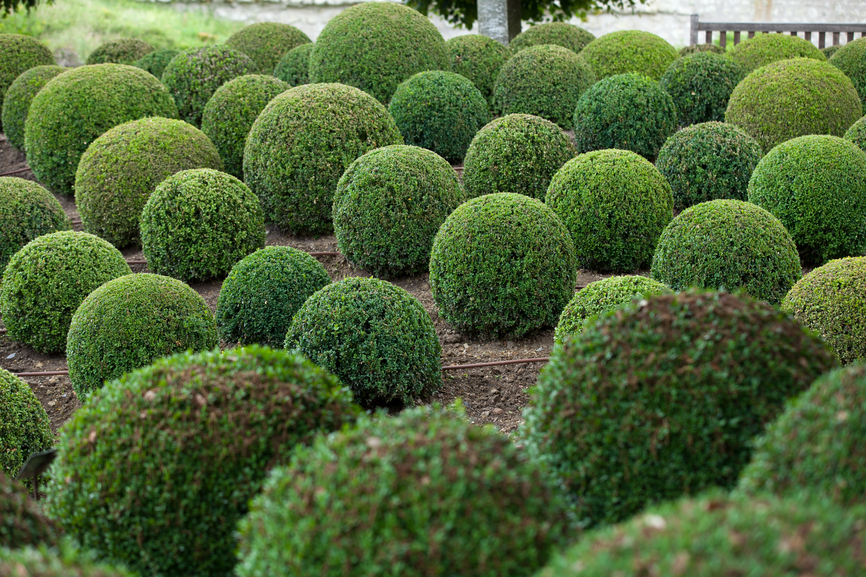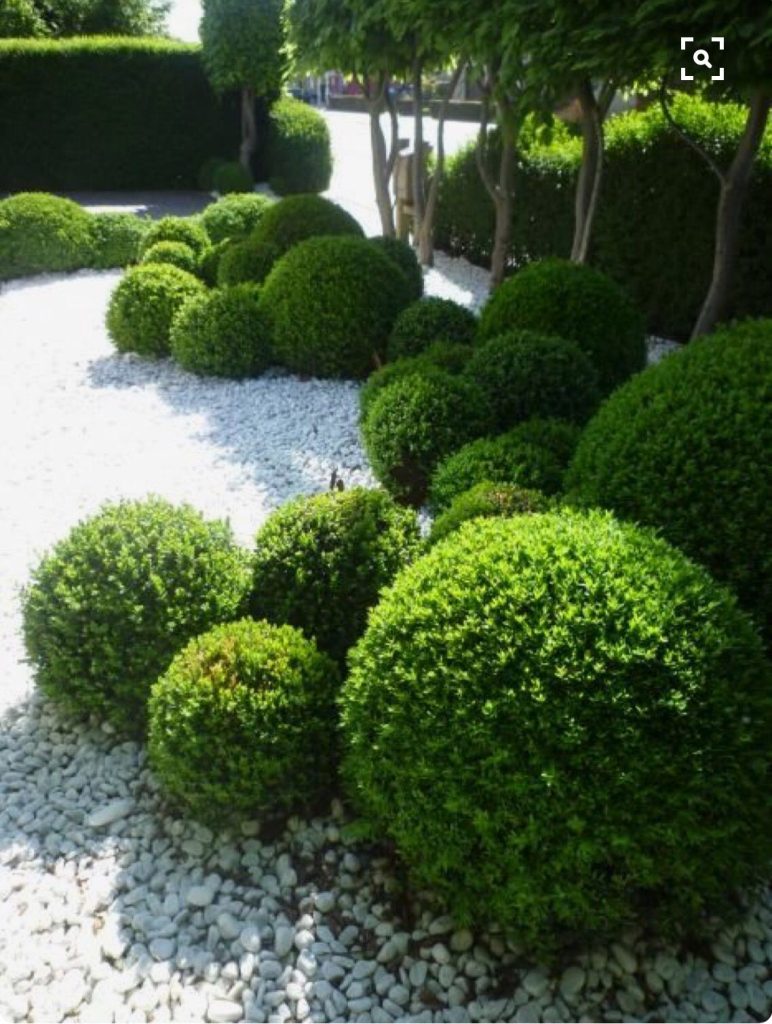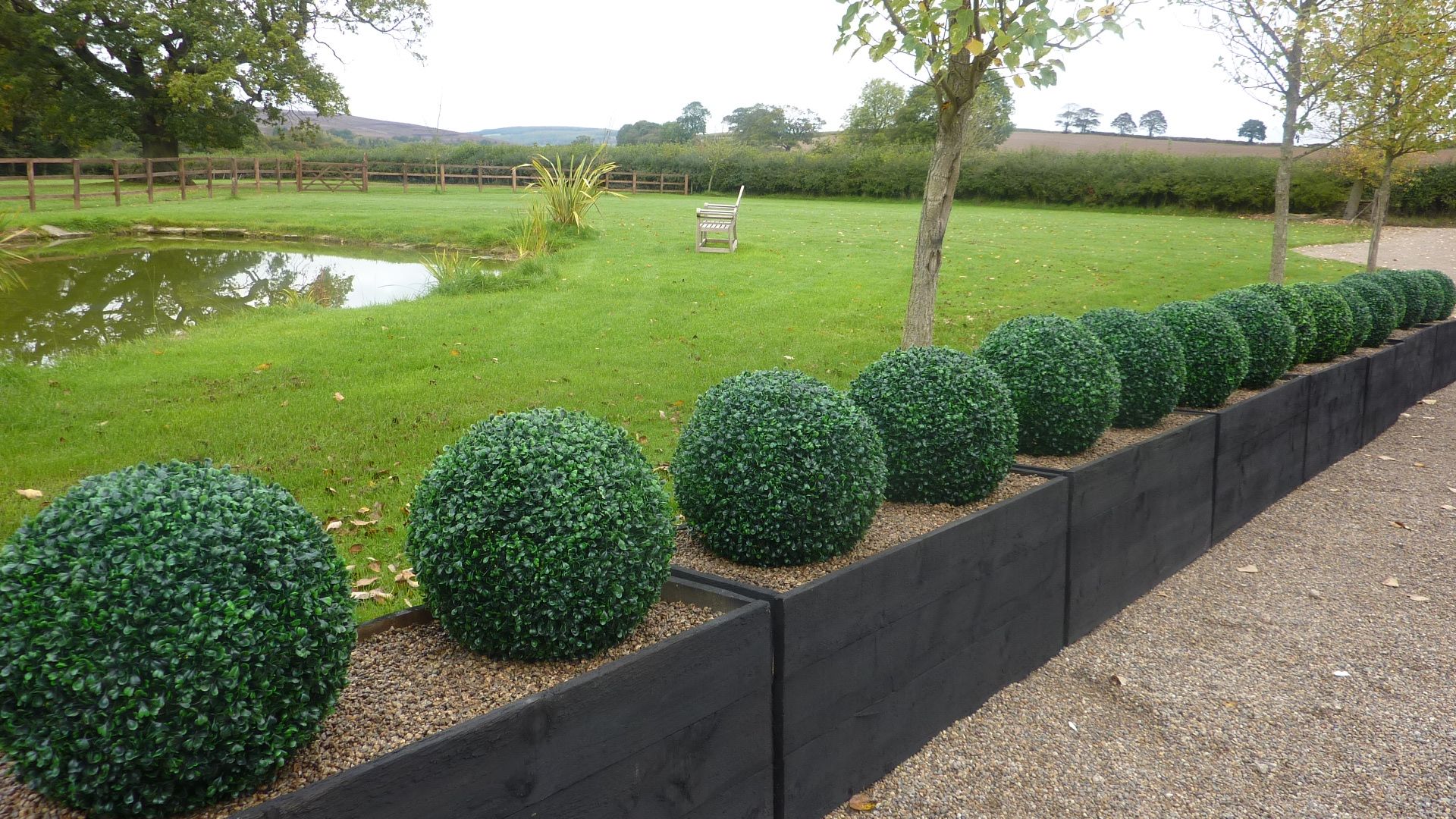Ball topiary is a type of topiary style where a shrub or tree is pruned into a round, ball-like shape. This style is popular in formal gardens, where the rounded shapes add a sense of order and structure.
The history of topiary can be traced back to ancient Rome, where it was used to create elaborate garden designs. Topiary then spread to other parts of Europe and became popular in the Renaissance era. During this time, elaborate topiary designs were created to impress visitors and demonstrate the skill of the gardeners.
The ball topiary style emerged in the 18th century, and it quickly became a popular choice for formal gardens. In the Victorian era, ball topiaries were used in parterre designs, which were intricate patterns created with flower beds and shrubs. The ball topiary style also became popular in the Edwardian era, where it was used to create elegant garden designs.
To create a ball topiary, gardeners start by selecting a shrub or tree that is suitable for shaping. Boxwood, yew, and privet are commonly used for ball topiaries because they are dense and can be easily pruned. The plant is then pruned and shaped over time to create a spherical shape.

Creating a ball topiary can be a fun and rewarding project for any gardener. Here are the steps to train and create a ball topiary:
- Choose your plant: Select a shrub or tree that has a natural tendency to grow in a spherical shape, such as boxwood, yew, or privet. The plant should be healthy and well-established in the ground or a container.
- Decide on the size and shape of your ball topiary: Consider the location and scale of your garden, as well as the size of the plant you have selected. A larger plant can be shaped into a larger ball topiary, while a smaller plant may be better suited for a smaller one.
- Begin pruning: Start by trimming the plant into a rough sphere shape. Use pruning shears to remove any branches or foliage that extend beyond the shape you are trying to create. Be sure to step back often and assess the shape to ensure you are creating a symmetrical ball.
- Continue shaping: As the plant grows, continue to trim and shape it. Trim the top and sides of the plant to maintain the desired shape. Use shears to create a smooth, rounded surface, and prune any new growth that is not part of the ball shape.
- Maintain your ball topiary: Once you have achieved the desired shape, it is important to continue to maintain your ball topiary. Regular pruning is necessary to keep the plant in shape, as new growth will constantly appear. Prune your ball topiary at least once a month, or more often if necessary, to maintain the shape.
- Water and fertilize your ball topiary: Keep your ball topiary well-watered, especially during hot and dry weather. You can also fertilize it once a year to promote healthy growth and lush foliage.
With patience and dedication, you can create a beautiful ball topiary that will add a touch of elegance and sophistication to your garden.

Where can I find Ball Topiary Style?
There are several famous gardens around the world that are known for their use of ball topiary. Here are a few examples:
- Levens Hall in Cumbria, England: The gardens at Levens Hall are famous for their collection of topiary, including over 100 hedges and trees that have been pruned into a variety of shapes, including balls. The gardens have been maintained in their current form since the 17th century.
- Villandry Gardens in the Loire Valley, France: The Villandry Gardens are known for their intricate formal gardens, including a section with nine parterres made up of geometric patterns and ball-shaped topiary.
- Boboli Gardens in Florence, Italy: The Boboli Gardens, located behind the Pitti Palace, were created in the 16th century and feature a wide variety of topiary, including several ball-shaped designs.
- Château de Marqueyssac in Dordogne, France: The Château de Marqueyssac is home to one of the largest collections of boxwood topiary in Europe, including many ball-shaped designs.
- Longwood Gardens in Pennsylvania, United States: The gardens at Longwood are known for their formal design and extensive collection of topiary, including several ball-shaped designs that are popular with visitors.
These are just a few examples of famous gardens that feature ball topiary. Many other gardens around the world also incorporate ball topiary into their designs, making it a popular choice for adding structure and elegance to formal gardens.
In recent years, the ball topiary style has seen a resurgence in popularity. It is often used in contemporary garden designs to create a sense of order and simplicity. Ball topiaries are also popular in small gardens or on balconies, where they can add a touch of greenery without taking up too much space.
